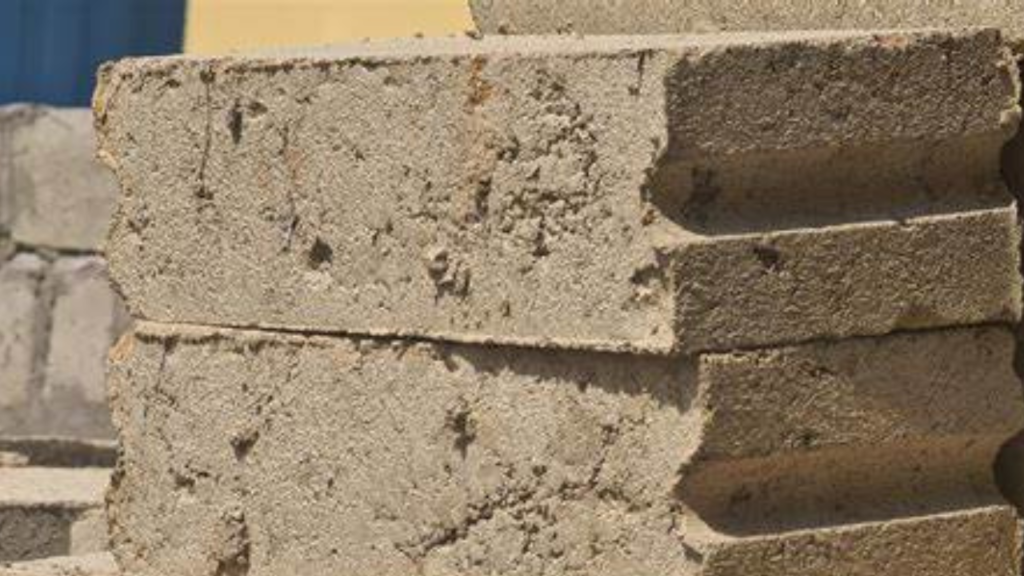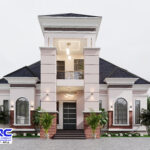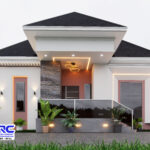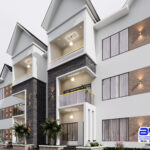When it comes to building houses, schools, shops, and even fences in Nigeria, one material you’ll almost always come across is the sandcrete block.
These blocks are the most commonly used walling materials across the country but what exactly are they, and why are they so popular?
In this article, Bullionrise consult will explain in simple terms what sandcrete blocks are, their common uses, and the key advantages they offer in construction.
Table of Contents
ToggleSee related – how many blocks for 3 bedroom flat
What Is a Sandcrete Block?

Sandcrete blocks are building blocks made from a mixture of cement, sand, and water.
The mix is molded into rectangular shapes and then left to cure (harden) for several days.
They can be hollow or solid, and they come in various sizes the most popular sizes in Nigeria are:
- 9-inch blocks (for external/load-bearing walls)
- 6-inch blocks (for internal partition walls)
Sandcrete blocks are not baked like clay bricks, but air-cured, making them easier and cheaper to produce.
See related – Which block is best for foundation | how to figure it out
Components of a Sandcrete Block
- Cement – acts as the binder.
- Sharp sand – provides bulk and strength.
- Water – activates the cement for binding.
The common mix ratio for quality blocks is 1 bag of cement to 6–8 head pans of sand.
Uses of Sandcrete Blocks in Nigeria
Sandcrete blocks are widely used in various types of building and construction projects such as:
- Residential buildings – for walls, fences, pillars, and foundations
- Commercial buildings – offices, shops, warehouses, and malls
- Public infrastructure – schools, hospitals, government buildings
- Boundary fences and gates – perimeter walls
- Temporary structures – site offices, kiosks, and sheds
See also – Which is better, hollow blocks or solid blocks?
Advantages of Sandcrete Blocks
1. Cost-Effective
Sandcrete blocks are relatively affordable and widely available.
They are cheaper than other walling materials like burnt bricks or interlocking blocks, especially for large projects.
2. Ease of Production
They are easy to mold on-site using simple block-making machines, making them accessible even in rural areas.
3. Lightweight (for hollow blocks)
Hollow sandcrete blocks are lighter than solid blocks, making them easier to lift, transport, and lay during construction.
4. Good Load-Bearing Strength
When made properly, sandcrete blocks can support structural loads, especially for low-rise buildings.
5. Faster Construction
Large-sized sandcrete blocks (like 9-inch blocks) cover more wall area quickly, reducing construction time.
6. Versatility
Sandcrete blocks can be used in different parts of a building, from foundations to walls, fence lines, and more.
7. Readily Available Materials
The materials used to produce sandcrete blocks which are sand, cement, and water are readily available across Nigeria.
Limitations to Know
While sandcrete blocks are great, they have a few limitations:
- Not ideal for high-rise buildings without reinforcement
- Poor thermal insulation compared to materials like bricks
- Quality varies depending on how they’re made (many low-quality blocks are sold in the market)
That’s why it’s important to ensure the right cement-sand ratio and proper curing if you’re molding on-site or buying from trusted block makers.
Conclusion
Sandcrete blocks are a vital part of building construction in Nigeria that are affordable, versatile, and easy to use.
Whether you’re building a house, a fence, or a commercial structure, these blocks are usually the go-to choice for walls and foundations.
However, for best results, always use high-quality sharp sand, the correct mix ratio, and proper curing methods to ensure strength and durability.
Frequently asked questions
What is a sandcrete block, and how is it made?
A sandcrete block is a building material made by mixing sand, cement, and water to form solid masonry units.
The mixture is molded into block shapes and cured to achieve strength.
Sandcrete blocks are widely used in construction due to their affordability and ease of production.
What are the common uses of sandcrete blocks in construction?
Sandcrete blocks are used for:
- Building walls for residential and commercial structures.
- Partitioning interior spaces.
- Fencing and boundary walls.
- Supporting structures like columns and foundations in low-rise buildings.
What are the advantages of using sandcrete blocks over other building materials?
- Affordability: Sandcrete blocks are cheaper than concrete blocks.
- Availability: Materials for production (sand and cement) are easy to source.
- Ease of construction: Lightweight and simple to handle.
- Thermal insulation: Helps regulate indoor temperature.
Are sandcrete blocks suitable for load-bearing structures?
Sandcrete blocks can be used for load-bearing walls in single or low-rise buildings.
However, for high-rise buildings or structures with heavy loads, reinforced concrete blocks or additional structural support may be needed.
How does the strength of sandcrete blocks compare to concrete blocks?
Sandcrete blocks are generally less strong than concrete blocks because they contain a higher ratio of sand to cement.
Concrete blocks, which have more cement, provide greater durability and load-bearing capacity.






